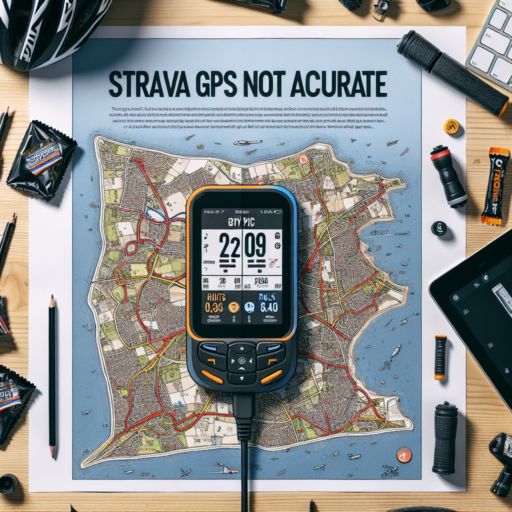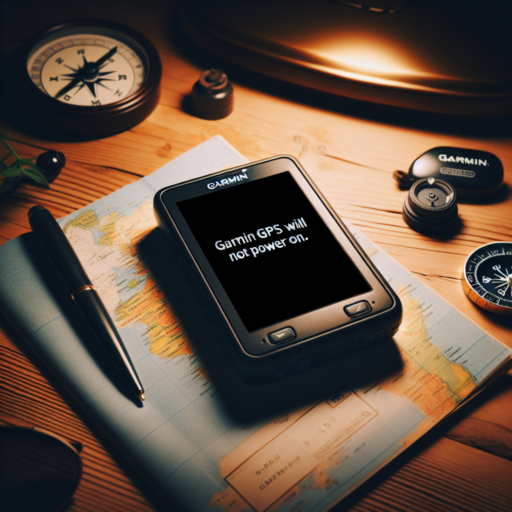Understanding the Basics of GPS Reception Issues
Global Positioning System (GPS) has become an integral part of modern navigation and tracking systems. Despite its widespread use, users often experience GPS reception issues that can lead to frustration and, in critical situations, even safety risks. Understanding the basics of these issues is paramount for troubleshooting and improving GPS reliability.
Common Factors Affecting GPS Reception
Several external factors can deteriorate GPS signal quality and accuracy. Among the most prevalent is obstructions such as buildings, tall trees, or even mountains that block the direct line of sight between the GPS device and satellites. Weather conditions, particularly heavy cloud cover, can also play a significant role in reception quality. Additionally, the urban canyon effect, where signals reflect off buildings in dense urban areas, can lead to inaccurate positioning or loss of signal.
Technological Limitations and Interference
Beyond environmental factors, technology itself can be a source of GPS reception issues. The intrinsic limitations of the device’s antenna and the satellite’s signal strength affect reception. Interference from other electronic devices, both intentional (jamming) and unintentional (electromagnetic interference from nearby equipment), can disrupt the GPS signals. Understanding these limitations is critical for mitigating reception problems.
To combat these challenges, users can employ several strategies, such as ensuring a clear view of the sky, avoiding known areas with poor reception, and using devices with better antenna technology. Awareness and understanding of the basics of GPS reception issues can significantly enhance the experience of using GPS technology across a wide range of applications.
Common Causes of No GPS Reception and Troubleshooting Tips
When GPS technology falters, it’s not just an inconvenience; it can halt our modern, fast-paced world in its tracks. Understanding the common causes of no GPS reception is crucial for swift troubleshooting. Below, we delve into these causes and provide practical tips to get your GPS back online.
Obstructions Interfering with Signal
One of the most common reasons for GPS failures is obstructions that block the signal between the GPS device and the satellites. Tall buildings, dense forests, and even inclement weather can severely weaken or completely block GPS signals. Moving to a location with a clearer view of the sky can significantly improve your reception. Additionally, waiting for severe weather to clear can also be a simple yet effective solution.
Outdated GPS Software
Just like any technology, GPS devices rely on software that must be kept current to function optimally. An outdated GPS system may struggle to connect with satellites due to compatibility issues or outdated satellite data. Regularly updating your GPS device’s software is a straightforward fix that can prevent many reception problems.
When faced with a GPS reception problem, pinpointing the cause is half the battle. By understanding common issues like signal obstructions and outdated software, and applying these troubleshooting tips, you can quickly restore your GPS connection. Remember, GPS technology, although highly reliable, is not immune to the challenges posed by the natural and built environment.
How Weather Conditions Affect Your Device’s GPS Signal
Understanding how weather conditions impact GPS signals is crucial for anyone who relies on location-based services. GPS, or Global Positioning System, is a network of satellites that transmit signals to GPS receivers, helping determine precise locations on Earth. But did you notice changes in GPS accuracy during different weather conditions?
Impact of Atmospheric Conditions
Various atmospheric conditions can cause signal delays, affecting the accuracy of your GPS device. For instance, ionospheric disturbances, caused by solar flares, can lead to significant GPS signal degradation. Similarly, heavy cloud cover can occasionally reduce the signal strength, though the effect is comparatively less severe. These disruptions can result in positional inaccuracies, leading to challenges in navigation, especially in critical applications.
Effect of Severe Weather
During severe weather events like storms or hurricanes, the increased amount of precipitation can absorb and scatter the GPS signals before they reach your device. This scattering effect causes a delay in the signal’s arrival time, affecting the calculated positions. It’s during such times that users may experience temporary disruptions in their GPS services, highlighting the sensitivity of GPS technology to extreme weather conditions.
Top 5 Fixes for Improving GPS Reception on Your Smartphone
Certainly! Crafting an SEO-optimized section for the given H2, while adhering to your requirements:
Check Your Smartphone’s Case
One common culprit behind poor GPS reception is the very thing meant to protect your device: your smartphone’s case. Some materials, especially metallic or thick cases, can significantly hinder signal strength. Removing the case temporarily can help you determine if it’s the cause of the issue. If GPS reception improves without it, consider switching to a case made from a less obstructive material.
Enable High Accuracy Mode
For those critical moments when you need the most precise location information, turning on High Accuracy Mode can make all the difference. This setting allows your smartphone to use a combination of GPS, Wi-Fi, Bluetooth, and cellular networks to pinpoint your location. Navigate to your phone’s Location settings and ensure High Accuracy or Enhanced Precision mode is activated for optimal GPS performance.
Update Your Smartphone’s Software
Keeping your smartphone’s operating system up-to-date is crucial for the optimal performance of all components, including GPS. Manufacturers often release updates that enhance functionality and fix bugs affecting GPS reception. Regularly check for software updates and install them to not only improve your GPS reception but also secure your device against vulnerabilities.
Avoid Low Signal Areas
Areas with low signal strength, such as underground locations or dense urban settings with tall buildings, can severely impact your GPS reception. Whenever possible, move to an area with a clearer view of the sky or fewer obstructions to enhance your smartphone’s ability to connect to GPS satellites efficiently.
Impact of Building Materials on GPS Signal Strength
The world of GPS technology has profoundly impacted how we navigate and perceive our surroundings. However, one aspect often overlooked is the Impact of Building Materials on GPS Signal Strength. Building materials play a crucial role in determining the efficiency and reliability of GPS signals within urban environments.
Different materials have varying effects on the ability of a GPS signal to penetrate a structure. For instance, materials like concrete and metal, commonly used in urban construction, are known for their significant signal attenuation properties. These dense materials can reflect or absorb GPS signals, leading to weakened or sometimes entirely blocked signals. On the other hand, materials such as wood and glass, while still impacting signal strength to a degree, allow for better penetration of GPS signals compared to their denser counterparts.
The specific composition and thickness of a building’s walls can also impact GPS effectiveness. Multi-layered structures, especially those reinforced with steel or built extensively with concrete, can create challenging environments for GPS signals to maintain their integrity. This phenomenon often results in reduced signal accuracy, leading to potential complications in GPS-based applications, especially in densely built-up areas.
No se han encontrado productos.
Expert Guide: Calibrating Your GPS for Better Accuracy
Calibrating your GPS device is a critical step to ensure you get the most accurate location data, whether you’re navigating city streets or exploring remote trails. With a few simple adjustments, you can significantly improve your GPS’s performance, reducing the chances of getting lost or making unnecessary detours.
Firstly, it’s essential to understand that GPS accuracy can be influenced by various factors, including your device’s hardware, the surrounding environment, and even atmospheric conditions. However, regular calibration can mitigate these issues. Most smartphones and GPS devices have built-in calibration features that allow users to enhance accuracy by simply following a series of steps.
Steps for Calibrating Your GPS
- Update Your Device: Always start with updating your device’s software. Manufacturers regularly release updates that improve GPS functionality and accuracy.
- Clear View of the Sky: When calibrating your GPS, make sure you’re in an open area with a clear view of the sky. Tall buildings and heavy foliage can interfere with the signal.
- Use Calibration Features: Access the GPS calibration feature in your device’s settings. The process typically involves a series of movements, like tilting or rotating the device, to calibrate the sensors properly.
By carefully following these steps, you can enhance your GPS’s accuracy, ensuring smoother navigation and a better overall experience. Remember, the key to maintaining GPS accuracy is regular calibration, especially if you frequently travel to different locations or after significant software updates.
GPS Signal Blockers: How They Work and Legal Implications
GPS signal blockers, often referred to as GPS jammers, have become increasingly sophisticated tools designed to disrupt the accurate functioning of GPS systems. These devices operate by emitting signals at the same frequency used by GPS devices, thereby overriding or scrambling the communication between a GPS satellite and its receiver. The primary use of GPS blockers is to prevent tracking of a vehicle or an individual by hiding their location.
The technology behind GPS jammers varies in complexity, from simple, low-power devices that can disrupt signals in a small area, to more powerful units capable of creating ‘dead zones’ in significantly larger spaces. These devices typically work within a range of 5 to 10 meters for personal units, but more sophisticated models can cover areas up to several kilometers, affecting not only personal navigation devices but also critical infrastructures that rely on GPS signals for operation.
However, the deployment of GPS blockers carries serious legal implications. In many countries, the use, possession, or sale of GPS jammers is illegal due to the potential risks they pose to public safety. For instance, blocking GPS signals can lead to disruptions in emergency services, aviation navigation, and the functioning of various national security apparatus. Regulators argue that the indiscriminate nature of GPS jamming can have unintended consequences, risking lives and compromising national security.
The Role of Software Updates in Resolving GPS Reception Problems
Software updates play a pivotal role in enhancing the functionality and performance of GPS devices. These updates are crucial for addressing various issues that users might face, including those related to GPS reception. By regularly updating the GPS device’s software, manufacturers ensure that the device not only remains compatible with new changes in satellite technology but also benefits from bug fixes and improvements in GPS signal processing algorithms.
One of the key aspects of software updates is their ability to refine the GPS device’s ability to interpret and utilize the signals received from satellites. Improvements in algorithms, enabled through updates, can significantly reduce the time it takes for a GPS device to acquire signals and improve accuracy in determining a user’s location. These updates may also include enhancements that allow the device to maintain a stable connection in environments that traditionally pose challenges for GPS reception, such as urban canyons or areas with dense foliage.
Moreover, software updates often bring improvements to the way a GPS device filters and processes signal interference. With the advent of new technologies and sources of potential interference, keeping the GPS software up-to-date ensures that the device can better distinguish between valid signals and noise. This capability is crucial in maintaining high-quality GPS reception under various conditions and minimizing the chances of location errors.
When to Seek Professional Help for Your GPS Reception Issues
Experiencing problems with your GPS can be frustrating, especially when it disrupts your navigation and travel plans. Knowing when to seek professional help for your GPS reception issues is crucial for ensuring you’re not left stranded or lost. There are several signs that it might be time to consult with a professional to diagnose and fix your GPS problems.
Consistent Signal Loss in Different Locations
If your GPS frequently loses signal no matter where you are, it could indicate a hardware malfunction or a problem with the device’s internal antenna. While occasional signal loss may occur due to environmental factors, consistent issues across various locations suggest it’s time to get professional assistance.
Persistent Incorrect Location Data
When your GPS continually provides incorrect location data or shows you on the wrong paths, this is a clear sign that something is wrong. Before seeking help, ensure your maps are updated. If the problem persists even after updates, this indicates a deeper issue that likely requires an expert’s intervention.
In summary, while minor GPS reception issues can often be solved with simple fixes, such as software updates or restarting your device, persistent problems like consistent signal loss and regularly inaccurate location data are significant indicators that professional help is needed. Ignoring these signs may lead to greater inconveniences or even safety concerns during your travels.
Navigating GPS Dead Zones: Tips and Tricks for Lost Signals
Exploring unfamiliar roads can lead you into the daunting realm of GPS dead zones, where your navigation system’s signals vanish, leaving you to fend for yourself. These areas, devoid of signal, often result in confusion and delays. However, understanding how to navigate these tricky spots ensures you remain on track, regardless of signal availability. Let’s delve into some effective strategies for dealing with lost GPS signals.
Preparation Before Your Journey
Before embarking on your journey, ensure you’ve done your homework. Downloading offline maps is a crucial step for seamless navigation through dead zones. Apps like Google Maps and HERE WeGo allow users to save maps for offline use, providing reliable directions even when your signal drops. Additionally, studying your route in advance and familiarizing yourself with major landmarks can offer invaluable guidance when electronic navigators falter.
Alternative Navigation Tools
In the era where digital navigation dominates, we often overlook traditional tools like paper maps and compasses. Yet, these old-school navigators emerge as lifesavers in GPS dead zones. Keeping a detailed road atlas in your vehicle is not just an act of nostalgia but a practical measure for unforeseen signal failures. Moreover, learning basic compass reading skills can aid in maintaining your bearings when technology falls short.
While the digital age has ushered in unparalleled convenience in navigation, encountering GPS dead zones is a stark reminder of technology’s limitations. However, by preparing ahead, embracing alternative navigation methods, and adapting to the environment, you can overcome these challenges. Exploring these dead zones can transform from a strenuous ordeal into an insightful journey, underscoring the importance of preparation and adaptability on the road.




